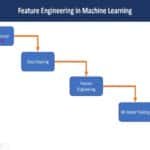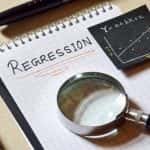Machine Learning is a subset of artificial intelligence (AI) that focuses on developing models and algorithms that train the machine to think and work like a human. It allows computers to acquire knowledge and make predictions or decisions without being specifically programmed. It entails developing computer programs that can improve themselves on their own based on expertise or data.
There are two types of Machine Learning techniques, including supervised and unsupervised learning. The following blog will focus on Unsupervised Machine Learning Models focusing on the algorithms and types with examples.
Unsupervised machine learning is a type of machine learning where the algorithm learns patterns and relationships in the data without any predefined labels or target variables.
What is Unsupervised Machine Learning?
Unsupervised Learning is a Machine Learning technique where the users do not require to supervise the model. Significantly, the technique allows the model to work independently by discovering its patterns and previously undetected information. Therefore, it mainly deals with unlabelled data.
The ability of unsupervised learning to discover similarities and differences in data makes it ideal for conducting exploratory data analysis. Additionally, it is also helpful in enabling cross-selling strategies, customer segmentation, and image recognition.
Unsupervised Learning Algorithms
Unsupervised Learning Algorithms tend to perform more complex processing tasks in comparison to supervised learning. However, unsupervised learning can be highly unpredictable compared to natural learning methods. There are different kinds of unsupervised learning algorithms, including clustering, anomaly detection, neural networks, etc.
Unsupervised Machine Learning Example
Taking an unsupervised Machine Learning example, let’s consider a dataset that contains images of different cats and dogs. The algorithm was never trained based on the given dataset, meaning that it has no idea about the dataset. The task of the unsupervised learning algorithm is to identify the features of the image on its own. The algorithms will perform the task using unsupervised learning clustering, allowing the dataset to divide into groups based on the similarities between images.
Reasons for Using Unsupervised Learning Algorithms
Given below are some of the prime reasons for using Unsupervised Learning Algorithms in Machine Learning:
- It finds all kinds of unknown patterns within a particular dataset.
- Unsupervised learning helps in finding the features which are useful for categorization
- It takes place in real-time, which implies that all the input data is essential to be analyzed and labeled in the presence of the users.
- Acquiring unlabelled data from computer systems is easier than labeled data.
Types of Unsupervised Learning Algorithms
The two types of unsupervised learning algorithms include two categories, clustering, and association. These can be explained as follows:
Clustering: It is a method of grouping the objects into clusters focusing on which it is possible to find the similarities that are included within a group and another group that does not have any similarities. Cluster analysis helps in finding similarities between the data objects and helps in categorizing them, emphasizing the presence or absence of commonalities.
Association: The association rule in unsupervised Machine Learning models includes the method which is used for finding the relationship between variables within large volumes of datasets. The method helps in determining the set of items that comes together within a dataset. With the help of this method, companies will find marketing strategies becoming more effective. Market-Based Analysis can be considered a typical example of an Association rule.
Clustering Types of Unsupervised Learning Algorithms:
Considering that Unsupervised Learning Clustering is a crucial part of the datasets, following are the clustering types which has been explained as follows:
Hierarchical Clustering: Hierarchical clustering builds a hierarchy of clusters. It can be either agglomerative or divisive. In agglomerative clustering, each data point starts as a separate cluster, and pairs of clusters are merged based on their similarity until a single cluster is formed. Divisive clustering starts with all data points in one cluster and splits them recursively until each data point is in its cluster.
K-Means Clustering: K-means is a popular and widely used clustering algorithm. It aims to partition a given dataset into K clusters, where each data point belongs to the cluster with the nearest mean. It works iteratively by updating cluster centers and reassigning data points until convergence.
K-NN (k nearest neighbors): K-Nearest Neighbors (K-NN) is a simple yet powerful algorithm used for both classification and regression tasks in Machine Learning. Hence, it is considered as one of the best-unsupervised learning algorithms. It is a type of instance-based or lazy learning algorithm that does not require explicit training. Instead, it uses the available labeled data to make predictions based on the proximity of data points in the feature space.
Principal Component Analysis: Principal Component Analysis (PCA) is a widely used dimensionality reduction technique in Machine Learning and data analysis. It aims to transform a high-dimensional dataset into a lower-dimensional space while preserving the most important information and minimizing the loss of variance.
Singular Value Decomposition: Singular Value Decomposition (SVD) is a matrix factorization technique that decomposes a matrix into three separate matrices, allowing us to extract valuable insights and reduce the dimensionality of the data. SVD is widely used in various domains, including data analysis, image processing, natural language processing, and recommendation systems.
Independent Component Analysis: Independent Component Analysis (ICA) is a statistical technique used for separating mixed signals into their original source components. It is a powerful method for blind source separation, which aims to recover the original source signals without knowing the mixing process.
Association: The association is the unsupervised machine learning algorithm that allows you to establish an association with the data objects within a set of large databases. This technique is about discovering the various interesting relationships between the variables in large databases. For instance, people buying a new home would most likely buy new furniture.
Differences Between Supervised vs Unsupervised Machine Learning
| Parameters | Supervised Machine Learning technique | Unsupervised Machine Learning technique |
| Input Data | Algorithms are trained using labeled data. | Algorithms are used against data that is not labeled |
| Computational Complexity | Supervised learning is a simpler method. | Unsupervised learning is computationally complex |
| Accuracy | Highly accurate and trustworthy method. | Less accurate and trustworthy method. |
Unsupervised Machine Learning Applications
News Sections: Google News is one of the unsupervised learning applications. It employs unsupervised learning to categorize articles on the same news story from different online news outlets. For instance, the outcome of a presidential election could be categorized under the “US” news label.
Computer Vision: Unsupervised learning algorithms are utilized for visual perception tasks, like object recognition.
Medical Imaging: Unsupervised Machine Learning plays a crucial role in medical imaging, aiding in tasks such as image detection, classification, and segmentation. These techniques are used in radiology and pathology to quickly and accurately diagnose patients.
Anomaly Detection: Unsupervised learning models excel at scanning vast amounts of data and identifying unusual data points within a dataset. These anomalies can shed light on faulty equipment, human errors, or security breaches.
Customer Persona: Defining customer personas helps understand business clients’ common traits and purchasing habits. Unsupervised learning enables businesses to create more refined buyer persona profiles, allowing organizations to align their product messaging more effectively.
Recommendation Engines: By analyzing past purchase behavior data, unsupervised learning can uncover data trends that can be used to develop more successful cross-selling strategies. This information is used to provide relevant add-on recommendations to customers during the online retail checkout process.
Advantages of Unsupervised Learning
- Unsupervised learning is used for more complex tasks as compared to supervised learning because, in unsupervised learning, we don’t have labeled input data.
- Unsupervised learning is preferable as it is easier to get unlabeled data than labeled data.
Disadvantages of Unsupervised Learning
- Unsupervised learning is intrinsically more difficult than supervised learning as it does not have corresponding output.
- The result of the unsupervised learning algorithm might be less accurate as input data is not labeled, and algorithms do not know the exact output in advance.
Synopsis
Clustering and association analysis are two common types of unsupervised learning. Clustering algorithms group similar data points together based on their characteristics, enabling tasks like customer segmentation and anomaly detection.
Association analysis discovers relationships and dependencies among data objects, supporting applications such as market basket analysis and recommendation systems.
Popular algorithms in unsupervised learning include hierarchical clustering, k-means clustering, and association rule mining techniques. Unsupervised learning has advantages in exploratory data analysis, pattern recognition, and data mining. However, one limitation is the lack of precise data sorting or classification information.
Nonetheless, unsupervised learning remains a powerful tool for uncovering hidden structures and insights in data, facilitating data-driven decision-making across various domains.
Enroll Now: Free Machine Learning Certification Online
Conclusion
Unsupervised learning is a Machine Learning technique that does not require labeled data for training. Instead, it focuses on finding patterns, structures, and relationships within the data itself. This makes it useful when dealing with large datasets or when labeling is time-consuming or unavailable. Unsupervised learning algorithms can uncover unknown patterns and provide valuable insights, thus it helps in training the ML models to perform more efficiently.









